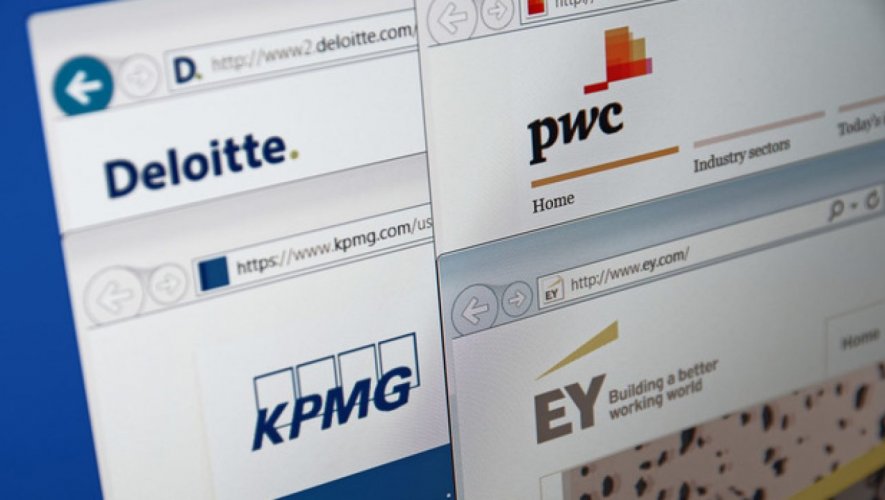On March 18, the UK government weighed in with its long-promised consultation paper (the “Consultation), “Restoring Trust in Audit and Corporate Governance.” Ninety-eight questions, spread over 232 pages, contain much that is cautious and little that is innovative. The problem is, what is cautious would not innovate, and what would innovate is not cautious.
For another day, the Consultation’s fulsome treatment of such worthy topics as the re-purposing of the UK’s audit regulator, the performance and accountability of corporate directors, and the very purpose of corporate information assurance. On the central topic of public concern since the failure of Carillion back in January 2018—the structure and performance of Big Audit itself—the Consultation offers on only two items.
These are the “operational separation” of the Big 4’s audit and advisory practices, and the threatened imposition on FTSE 350 companies of “managed shared audits”—a novel concept unknown to either professional standards or actual practice.
The first is easily disposed of, as an insubstantial exercise in optics. The second, to be further discussed, is ill-conceived and deeply flawed.
“Operational separation” should have been recognized as a trifling matter the instant it was mooted (see § 6 of the April 2019 Final Report of the Competition & Markets Authority on its Statutory Audit Market Study).
That’s because the UK critics have neither the will nor the authority to force the Big 4 networks to expel either of these core UK components from their global structures—disruptions that would disable them from the breadth of services demanded by the complex auditing of the world’s large public companies. Attempted “full legal separation” at the UK level, in other words, would be either or both legally impossible and globally inconsequential.
Moreover, it’s no surprise that the Big 4 would accede to the Financial Reporting Council’s quest for public display of their audit leadership, governance, and financial reporting. The simple reason was that they already had such structures and metrics in place—essential tools for managing these four large businesses—audit practices having published 2019 revenues of between £453 million and £713 million.
Back to “managed shared audits”—the Consultation contemplates (¶¶ 8.1.15-.16) that a FTSE 350 client of the Big 4 would be obliged in its audit tender process to identify a “meaningful proportion” of its statutory audit—not less than 10% and desirably closer to 30%, by metrics including audit fees, group revenues, assets, and profits—to be performed by one of the so-called “challengers”—that is, a firm below the Big 4 in size, yet brave enough to deem itself qualified to propose.
Whisper who dares: in a triangular relationship among an issuing company, its lead auditor, and a “challenger,” such an arrangement could satisfy none of the three.
Because the Consultation would not allow for joint bidding (¶ 8.1.17), a Big 4 firm preparing to take the lead would start from an untenable position—not even knowing the identity of the smaller firm, much less its qualifications, reputation, or resources by either industry or geography. Despite which, that lead auditor would, under applicable professional standards and the liability regimes to which its global-level work and overall opinion would be exposed, bear full responsibility for the results of the group audit including the work performed and up-streamed by the “challenger.”
Passing for the moment whether such inhibitions would implicate a scope restriction on the lead auditor’s acceptance and planning (see International Standard on Auditing 300), a lead firm’s risk manager would have cardiac arrest at any lesser level of involvement than essentially 100% re-performance of the work of the “challenger.”
As for the company under audit, its management and audit committee could scarcely with comfort identify between 10% and 30% of its operations to be devolved for audit by a “challenger” whose capability and experience at the FTSE level would range from untested to non-existent.
Complicating the risk assessments of both the company and the lead auditor are two issues that inhere in the globalized nature of the large-company environment. First, a recent study estimates that 62% of the sales of FTSE 100 companies (and 35% for the FTSE 250) are generated in locations and operations outside the UK—beyond the geographic scope of a UK-based audit team. That means either that a “challenger” would be obliged to bring its own global resources to bear at the same level of multinational scope and scale as its putative client—as the Big 4 do now—or that a company would essentially devolve what it could of its UK-based operations, leaving the lead auditor to carry out the ex-UK work and perform the eventual audit and reporting on the consolidation.
Also on the global front, affecting each leg of the triangle is the FTSE 350’s trading of their securities not just in the UK but in other major markets—especially the US where, as put in a recent cautionary article, American Depository Receipts are offered to investors “for over 200 UK companies including most of the country’s large cap companies.” The long US history of high-cost shareholder and other lawsuits presages liability exposures for which the “challengers” are woefully unequipped, and for which the Big 4 would have no appetite to carry the burden of their smaller brethren.
Finally there is the unavoidable but compelling matter of the scale and capability of the “challengers” themselves—who audit none of the FTSE 100 but 10 of the next smaller FTSE 250 (see Figure 38, p. 48, of the Financial Reporting Council’s “Key Facts and Trends in the Accountancy Profession,” October 2020).
In a 210-page Impact Assessment accompanying the Consultation, a model is cobbled together to support an aggressively optimistic position on the growth potential of the “challengers.” Using historical audit fee income for the five largest, ranging from 1% to 4% (page 127), a “conservative assumption (is made) that annual capacity growth of 2-4% can be safely sustained by challenger firms.”
Two problems—one of method and one of supply—are fatal.
For the first, the model disregards the Big 4-dominated growth of overall FTSE audit fees, as shown by two relevant data points: the 2018-2019 growth in Big 4 audit fee income of 6.9% (page 46 of the FRC’s “Key Facts and Trends”) and the UK audit practice growth figures for 2020 reported separately by the Big 4, ranging from 3% to 8.7%.
Bluntly put—at the “challenger” growth rates assumed by the Consultation model, and the faster rates actually achieved by the Big 4—the “challengers” would be losing market share, not gaining. Not assumed, but indeed omitted, would be the inability of the challengers in this zero-sum environment to grow relatively, enough faster than the Big 4 to achieve an actual shift in their market share.
To which must be added a further and final point—the supply side problem of the “challengers” to grow their necessary rosters of experienced partners. Within the Consultation’s timetable, their only available recruitment sources are the Big 4 themselves, where individual partners would understandably question a poacher’s overture: reduced profitability and lower compensation, lesser industry experience and technical support, and uncertain financial resources in the face of expanded liability exposure.
The “managed shared audit” proposal would exacerbate those concerns—because the partner-level obligations and responsibilities at a lead firm would expand in the execution of an engagement involving a “challenger.”
That is, in a single-firm engagement, a signing partner (and the other partners on a complex job) have the benefit of the coherence, cohesion, and efficiency of working with a team of subordinates sharing a common set of methodologies, documentation, vocabulary, and communications. Delegations can be made, and expectations set, in the relative confidence of shared membership in a common enterprise.
Not so, where that lead partner would be obliged to receive, review, and accept ultimate responsibility for 10% to 30% of an engagement as staffed and performed by strangers—for which there could be no solution but to increase dramatically the level of partner time, energy, and attention.
At the broad market level, such a shared-audit concern would anticipate major partner-driven fee increases at the lead firm. At the personal level, Big 4 audit partners would expect to see their value enhanced, not diminished, by the forced carving out of portions of their FTSE company portfolios—with a concomitant further reduction in a poacher’s attractiveness.
Shot through as the Consultation is with other failures and shortcomings of vision—to be addressed here anon—it is earnestly to be hoped that its proposal of “managed shared audit” will promptly and deservedly be dismissed as impractical and unachievable, lest it crash in unintended consequences if an attempt is actually made to put it in place.
[Ed. note: This article was originally published on Re:Balance on April 21. It has been re-published with permission.]
Jim Peterson is a 19-year veteran of Arthur Andersen’s internal legal group. He has been writing about the accounting firms and the Big Audit model since 2002, on his blog, Re:Balance, and in his two books, “Count Down: The Past, Present and Uncertain Future of the Big Four Accounting Firms” (2d ed. 2017) and “DOA: Can Big Audit Survive the UK Regulators?”


